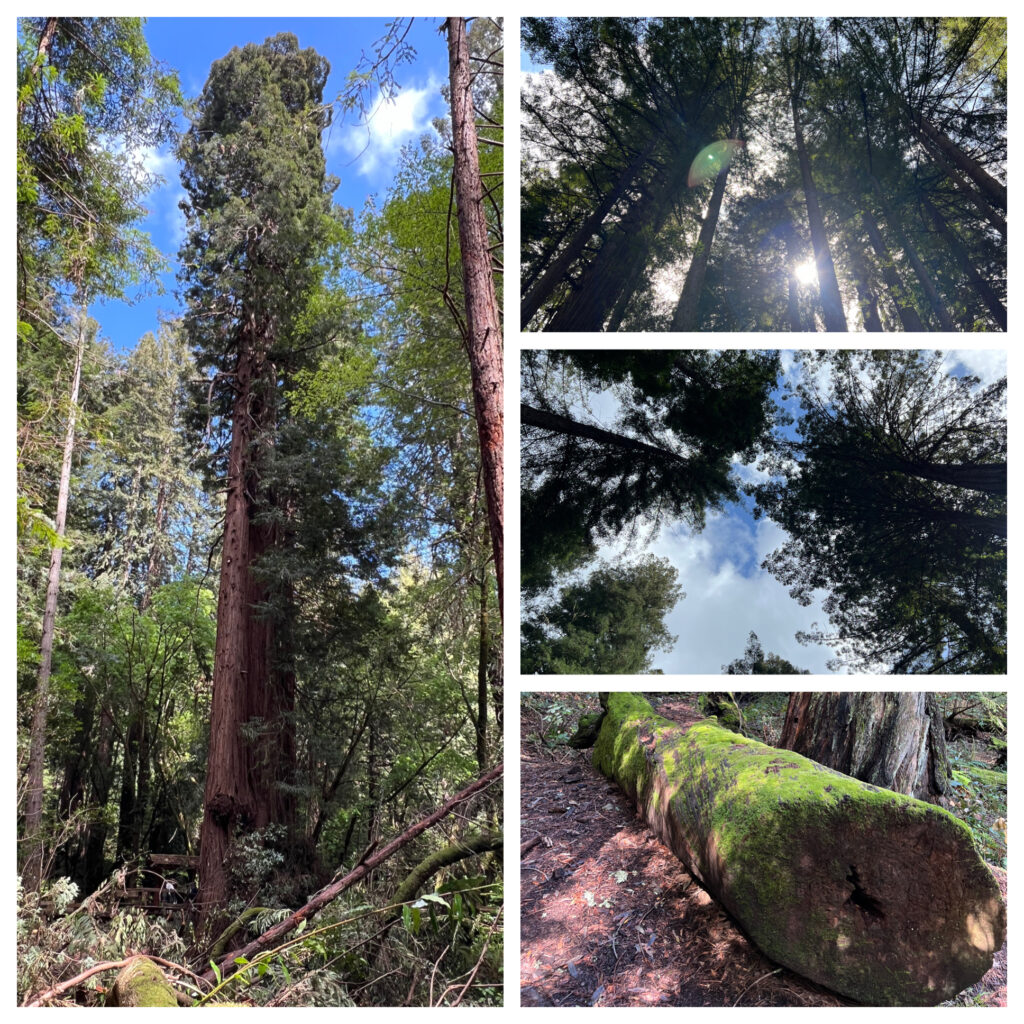Among Giants: A Journey Through Muir Woods and Mount Tamalpais


“Between every two pines, there’s a doorway to a new world,” as John Muir, the great naturalist, once penned. These words reverberated as I embarked on an adventure through the majestic corridors of Muir Woods National Monument and the surrounding expanse of Mount Tamalpais State Park in Northern California. Both areas intertwine in a landscape that can only be described as one of the planet’s most magnificent natural wonders, offering an immersive experience into the heart of ancient forests and awe-inspiring vistas.
Muir Woods National Monument, named in honor of Muir, is a pristine sanctuary of old-growth coastal redwood trees. Located just a stone’s throw from San Francisco, this monument is a testament to nature’s grandeur within Marin County’s verdant landscapes. Spanning 554 acres, 240 of those being ancient coast redwoods, Muir Woods is a rare remnant of the vast redwood forests that once blanketed the California coast. The monument’s proximity to the Pacific Ocean blesses it with a frequent marine layer fog, a crucial element for the redwoods, especially during the drier seasons. This fog nourishes the towering trees, allowing them to thrive and maintain their monumental stature, with the tallest reaching a sky-grazing 258 feet. Walking among these giants, I could not help but feel a profound sense of connection to the earth and the intricate web of life that pulses through this ancient forest. Adjacent to Muir Woods lies Mount Tamalpais State Park, an equally splendid natural area dominated by the 2,571-foot peak of Mount Tamalpais. The park, with its redwood and oak forests, covers around 25,000 acres and offers over 60 miles of trails. From its peak, a breathtaking 360-degree view spans from the San Francisco Bay to the Pacific Ocean, encapsulating the raw beauty of Northern California.
My journey began on the Fern Creek trail, weaving through the enchanting canopy and descending into the heart of the redwood forest. The path, part of a network of trails, offers a moderately challenging yet profoundly rewarding experience, revealing the forest’s subtle beauty with every step. Transitioning onto the Bootjack loop, I ascended through varying landscapes, each turn and climb unveiling new wonders, from dense woodlands to open grasslands adorned with the morning dew. The Stapelveldt Trail, a serene path named after its San Franciscan builder William Stapelveldt, took me deeper into the forest’s embrace. Here, amidst towering redwoods and lush ferns, the trail offered a quietude that spoke volumes, echoing the forest’s ancient stories. I continued down on the Ben Johnson Trail, a challenging yet invigorating path providing a unique vantage point to appreciate the vastness of the surrounding landscape. Venturing next onto the Hillside Trail, which runs parallel to Muir Woods’ main artery, I found myself on a path well-trodden yet still imbued with the tranquility of the forest. This trail was a harmonious blend of ease and natural beauty. As it wove its way through the trees, the gradual climb to the Redwood Creek Trail at the valley’s end was a testament to the thoughtful stewardship of this land, ensuring accessibility without sacrificing the wilderness that defines it. My journey culminated with the ascent on the Canopy View Trail, a route less traversed yet rich with panoramic splendors. Best experienced as a trio with the Lost Trail and the Fern Creek Loop Trail, the Canopy View Trail elevated my adventure, providing a vantage point not just of the landscape below but of the interconnectedness of these trails and the stories they hold. Here, amidst the whispers of the forest and the vistas that stretch beyond sight, I found the essence of Muir’s wilderness and a deeper appreciation for the natural world and our place within it.
As John Muir eloquently stated in his essay ‘Save the Redwoods,’ “Any fool can destroy trees. They cannot defend themselves or run away. And few destroyers of trees ever plant any, nor can planting avail much toward restoring our grand aboriginal giants. It took more than three thousand years to make some of the oldest Sequoias, trees still standing in perfect strength and beauty, waving and singing in the mighty forests of the Sierra.” Reflecting upon John Muir’s impassioned words, I could not help but feel a deep sense of responsibility and awe. Muir eloquently expressed the irreplaceable value of these ancient giants, emphasizing the destructive folly of mankind’s shortsightedness. His advocacy for preserving such wonders reminds us of the enduring power of nature and the critical need to protect these treasures for future generations.
My adventure through Muir Woods and Mount Tamalpais was not just a hike but a pilgrimage—a journey through the heart of nature’s masterpiece, where every step and breath felt like a discovery. John Muir’s spirit seemed to resonate with every rustle of the leaves, the fog that gently envelops the forest, and the silent, stoic grandeur of the redwoods. This journey through one of the world’s most beautiful regions was a poignant reminder of nature’s splendor and our place. As I left the forest’s shelter, John Muir’s words lingered, a call to protect and cherish these sanctuaries of nature. The adventure may have ended, but the memories and the message endure: to safeguard our natural world with the same reverence and passion as those who fought to preserve these wonders for us all.
Reference
Muir, John. 1920. “Save the Redwoods.” Sierra Club Bulletin Volume XI Number 1 – January, 1920. Retrieved from https://vault.sierraclub.org/john_muir_exhibit/writings/save_the_redwoods_1920.aspx
